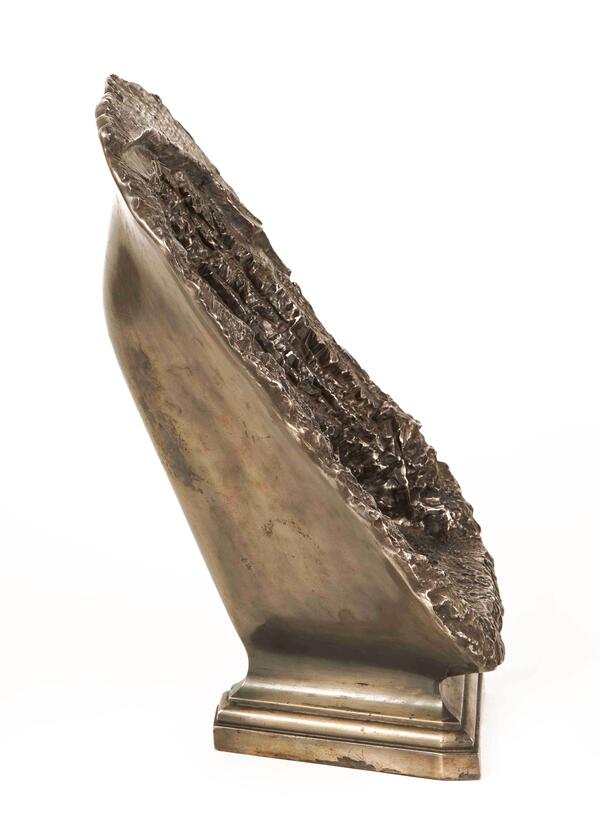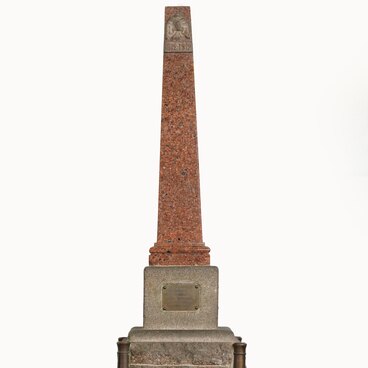At the end of September 1799, the Russian and Swiss troops under the command of Alexander Vasilyevich Suvorov began a Swiss campaign to defeat the French and force them out from the Helvetic Republic.
At the end of the 19th century, there were two significant anniversaries in Russia: the centenary of the Swiss campaign and one hundred years since the death of the generalissimo. To honor these dates, Prince Sergey Mikhailovich Golitsyn (1848–1915) decided to eternalize the memory of the great commander and his companions. Not only did he propose to create the monument, but also led all the negotiations and covered all expenses for the implementation of his idea.
Golitsyn believed the most suitable place for it was the Schöllenen gorge near the village of Andermatt. It was here the battle for the Devil’s Bridge took place between the Russians and the French. The Federal government did not immediately approve of Golitsyn’s proposal. However, the “last Moscow nobleman” Sergey Mikhailovich managed to obtain the necessary documents.
Alexander Nikolaevich Vekshinsky, an architect from St. Petersburg, was in charge of the project’s development. Richard Zschokke, a Swiss civil engineer who knew the peculiarities of construction works on such dangerous sites, supervised the process. The memorial, a 12-meter cross, was carved into the rock near the village of Andermatt. At the foot of the cross there is a wreath and a sword cast in bronze, as well as an inscription in Russian in 50-centimeter letters also cast in bronze.
The solemn opening ceremony was held in the presence of Russian and Swiss delegates. The anthems of both countries were played. In addition, an Orthodox memorial service for the fallen soldiers was held and silver wreaths were laid at the foot of the cross. Special celebrations in honor of Suvorov and dedicated to the heroic crossing of the mountains under the French fire have been held near the monument for many decades.
The model of the monument was made in 1900. Prince Sergey Golitsyn himself presented it to the Suvorov Museum. In 1937, as part of the collection of the Suvorov Museum, it was transferred to the Artillery Museum from the Military and Everyday Life History Museum.
At the end of the 19th century, there were two significant anniversaries in Russia: the centenary of the Swiss campaign and one hundred years since the death of the generalissimo. To honor these dates, Prince Sergey Mikhailovich Golitsyn (1848–1915) decided to eternalize the memory of the great commander and his companions. Not only did he propose to create the monument, but also led all the negotiations and covered all expenses for the implementation of his idea.
Golitsyn believed the most suitable place for it was the Schöllenen gorge near the village of Andermatt. It was here the battle for the Devil’s Bridge took place between the Russians and the French. The Federal government did not immediately approve of Golitsyn’s proposal. However, the “last Moscow nobleman” Sergey Mikhailovich managed to obtain the necessary documents.
Alexander Nikolaevich Vekshinsky, an architect from St. Petersburg, was in charge of the project’s development. Richard Zschokke, a Swiss civil engineer who knew the peculiarities of construction works on such dangerous sites, supervised the process. The memorial, a 12-meter cross, was carved into the rock near the village of Andermatt. At the foot of the cross there is a wreath and a sword cast in bronze, as well as an inscription in Russian in 50-centimeter letters also cast in bronze.
The solemn opening ceremony was held in the presence of Russian and Swiss delegates. The anthems of both countries were played. In addition, an Orthodox memorial service for the fallen soldiers was held and silver wreaths were laid at the foot of the cross. Special celebrations in honor of Suvorov and dedicated to the heroic crossing of the mountains under the French fire have been held near the monument for many decades.
The model of the monument was made in 1900. Prince Sergey Golitsyn himself presented it to the Suvorov Museum. In 1937, as part of the collection of the Suvorov Museum, it was transferred to the Artillery Museum from the Military and Everyday Life History Museum.





